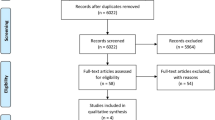Abstract
Arguably one of the most complex joints in the body, the temporomandibular joint (TMJ) presents one of the most difficult problems in modern medicine. Tissue engineering, for the TMJ disc in particular, has been proposed as a potential breakthrough treatment strategy for TMJ disorders. Central to tissue engineering is understanding growth factor effects on TMJ disc cells, and to the best of our knowledge, this is the first 3D growth factor study for these cells. The purpose was to examine the effects of high and low concentrations of basic fibroblast growth factor (bFGF), insulin-like growth factor-I (IGF), and transforming growth factor-β1 (TGF-β) on porcine TMJ disc cells. Cells were seeded onto non-woven PGA scaffolds (95% porosity) in spinner flasks, then cultured with a growth factor for 6 weeks. Constructs were analyzed for mechanical and structural integrity, cell number, and matrix biosynthesis. All growth factors improved mechanical and structural integrity compared to the control. IGF and TGF-β were most effective at promoting collagen synthesis, although there were no significant differences in glycosaminoglycan synthesis or cell number between any groups. After considering the economic advantage of IGF over TGF-β, the conclusion of this study is to use IGF in future TMJ disc tissue engineering experiments.
Similar content being viewed by others
References
Allen, K. D., and K. A. Athanasiou. Viscoelastic characterization of the porcine temporomandibular joint disc under unconfined compression. J. Biomech., 2005, in press.
Almarza, A. J., and K. A. Athanasiou. Seeding techniques and scaffolding choice for the tissue engineering of the temporomandibular joint disc. Tissue Eng., 10:1787–1795, 2004.
Almarza, A. J., A. C. Bean, L. S. Baggett, and K. A. Athanasiou. Biochemical content and distribution in the porcine temporomandibular joint disc. Br. J. Oral Maxillofac. Surg., 2005, accepted for publication.
Darling, E. M., and K. A. Athanasiou. Biomechanical strategies for articular cartilage regeneration. Ann. Biomed. Eng. 31:1114–1124, 2003.
Detamore, M. S., and K. A. Athanasiou. Effects of growth factors on temporomandibular joint disc cells. Arch. Oral Biol. 49:577–583, 2004.
Detamore, M. S., and K. A. Athanasiou. Motivation, characterization, and strategy for tissue engineering the temporomandibular joint disc. Tissue Eng. 9:1065–1087, 2003.
Detamore, M. S., and K. A. Athanasiou. Structure and function of the temporomandibular joint disc: Implications for tissue engineering. J. Oral Maxillofac. Surg. 61:494–506, 2003.
Detamore, M. S., and K. A. Athanasiou. Tensile properties of the porcine temporomandibular joint disc. J. Biomech. Eng. 125:558–565, 2003.
Detamore, M. S., J. N. Hegde, R. R. Wagle, A. J. Almarza, D. Montufar-Solis, P. J. Duke, and K. A. Athanasiou. Cell type and distribution in the porcine temporomandibular joint disc. J. Oral Maxillofac. Surg., 2005, submitted for publication.
Detamore, M. S., J. G. Orfanos, A. J. Almarza, M. M. French, M. E. Wong, and K. A. Athanasiou. Quantitative analysis and comparative regional investigation of the extracellular matrix of the porcine temporomandibular joint disc. Matrix Biol., 2005, in press.
Farrar, W. B., and W. L. McCarty, Jr. The TMJ dilemma. J. Ala Dent. Assoc. 63:19–26, 1979.
Girdler, N. M. In vitro synthesis and characterization of a cartilaginous meniscus grown from isolated temporomandibular chondroprogenitor cells. Scand. J. Rheumatol. 27:446–53, 1998.
Kim, K. W., M. E. Wong, J. F. Helfrick, J. B. Thomas, and K. A. Athanasiou. Biomechanical tissue characterization of the superior joint space of the porcine temporomandibular joint. Ann. Biomed. Eng. 31:924–930, 2003.
Korvick, D., and K. A. Athanasiou. Variations in the mechanical properties of cartilage from the canine scapulohumeral joint. Am. J. Vet. Res. 58:949–953, 1997.
Landesberg, R., E. Takeuchi, and J. E. Puzas. Cellular, biochemical and molecular characterization of the bovine temporomandibular joint disc. Arch. Oral Biol. 41:761–767, 1996.
Landesberg, R., E. Takeuchi, and J. E. Puzas. Differential activation by cytokines of mitogen-activated protein kinases in bovine temporomandibular-joint disc cells. Arch. Oral Biol. 44:41–48, 1999.
Mak, A. F., W. M. Lai, and V. C. Mow. Biphasic indentation of articular cartilage: I. Theoretical analysis. J. Biomech. 20:703–714, 1987.
Mow, V. C., M. C. Gibbs, W. M. Lai, W. B. Zhu, and K. A. Athanasiou. Biphasic indentation of articular cartilage: II. A numerical algorithm and an experimental study. J. Biomech. 22:853–861, 1989.
Pangborn, C. A., and K. A. Athanasiou. Effects of growth factors on meniscal fibrochondrocytes in monolayer cultures. Tissue Eng., 11, 2005, in press.
Pangborn, C. A., and K. A. Athanasiou. Effects of growth factors on meniscal fibrochondrocytes in three dimensional cultures. J. Orthop. Res., 2005, accepted for publication.
Puelacher, W. C., J. Wisser, C. A. Vacanti, N. F. Ferraro, D. Jaramillo, and J. P. Vacanti. Temporomandibular joint disc replacement made by tissue-engineered growth of cartilage. Oral Maxillofac. Surg. 52:1172–1177; discussion, 1177–1178, 1994.
Springer, I. N., B. Fleiner, S. Jepsen, and Y. Acil. Culture of cells gained from temporomandibular joint cartilage on non-absorbable scaffolds. Biomaterials 22:2569–2577, 2001.
Thomas, M., D. Grande, and R. H. Haug. Development of an in vitro temporomandibular joint cartilage analog. J. Oral Maxillofac. Surg. 49:854–856; discussion, 857, 1991.
Author information
Authors and Affiliations
Corresponding author
Rights and permissions
About this article
Cite this article
Detamore, M.S., Athanasiou, K.A. Evaluation of Three Growth Factors for TMJ Disc Tissue Engineering. Ann Biomed Eng 33, 383–390 (2005). https://doi.org/10.1007/s10439-005-1741-y
Received:
Accepted:
Issue Date:
DOI: https://doi.org/10.1007/s10439-005-1741-y




